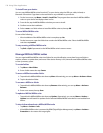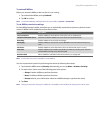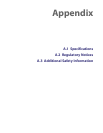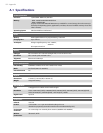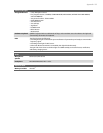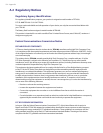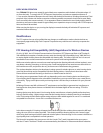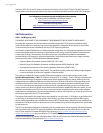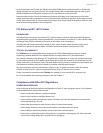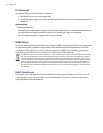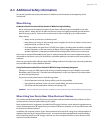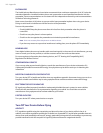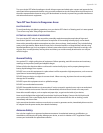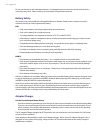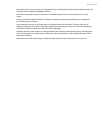
136 Appendix
Solutions (ATIS). The U and UT marks are referenced in Section 20.19 of the FCC Rules. The HAC rating and
measurement procedure are described in the American National Standards Institute (ANSI) C63.19 standard.
For information about hearing aids and digital wireless phones
FCC Hearing Aid Compatibility and Volume Control:
http://www.fcc.gov/cgb/dro/hearing.html
Gallaudet University, RERC:
http://tap.gallaudet.edu/DigWireless.KS/DigWireless.htm
SAR Information
SAR: 1.130 W/kg @1g (USA)
THIS MODEL DEVICE MEETS THE GOVERNMENT’S REQUIREMENTS FOR EXPOSURE TO RADIO WAVES.
For body worn operation, this phone has been tested and meets the FCC RF exposure guidelines when
used with the High Tech Computer Corp. accessories supplied or designated for this product. Use of other
accessories may not ensure compliance with the FCC RF exposure guidelines.
Your wireless mobile CDMA phone is a radio transmitter and receiver. It is designed and manufactured not to
exceed the emission limits for exposure to radio frequency (RF) energy set by the Federal Communications
Commission of the U.S. Government. These limits are part of comprehensive guidelines and establish
permitted levels of RF energy for the general population. The guidelines are based on the safety standards
previously set by both U.S. and international standards bodies:
• American National Standards Institute (ANSI) IEEE. C95.1-1992.
• National Council on Radiation Protection and Measurement (NCRP). Report 86. 1986.
• International Commission on Non-Ionizing Radiation Protection (ICNIRP) 1996.
• Ministry of Health (Canada), Safety Code 6. The standards include a substantial safety margin designed
to assure the safety of all persons, regardless of age and health.
The exposure standard for wireless mobile CDMA phone employs a unit of measurement known as the
Specific Absorption Rate, or SAR. The SAR limit set by the FCC is 1.6W/kg*. Tests for SAR are conducted with
the device transmitting at its highest certified power level in all tested frequency bands. Although the SAR
is determined at the highest certified power level, the actual SAR level of the device while operating can be
well below the maximum value. This is because the device is designed to operate at multiple power levels
so as to use only the power required to reach the network. In general, the closer you are to a wireless base
station antenna, the lower the power output. Before a device model is available for sale to the public, it must
be tested and certified to the FCC that it does not exceed the limit established by the government adopted
requirement for safe exposure. The tests are performed in positions and locations (e.g., at the ear and worn on
the body) as required by the FCC for each model.
The highest SAR value for this model device when tested for use at the ear is 1.130 W/Kg @ 1g and when worn
on the body, as described in this user guide, is 0.922 W/Kg @ 1g. (Body-worn measurements differ among
device models, depending upon available accessories and FCC requirements). While there may be differences
between the SAR levels of various devices and at various positions, they all meet the government requirement
for safe exposure.
The FCC has granted an Equipment Authorization for this model device with all reported SAR levels evaluated
as in compliance with the FCC RF exposure guidelines. SAR information on this model device is on file with
the FCC and can be found under the Display Grant section of https://gullfoss2.fcc.gov/prod/oet/cf/eas/
reports/GenericSearch.cfm after searching on FCC ID: NM8TITA100.
Additional information on Specific Absorption Rates (SAR) can be found on the Cellular Telecommunications
& Internet Association (CTIA) web-site as http://www.phonefacts.net.



